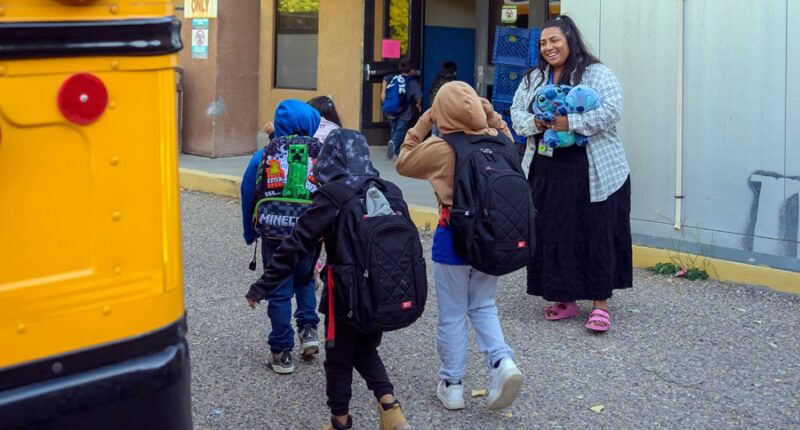Share this @internewscast.com

Schools are struggling to get chronic absenteeism to pre-pandemic levels, five years after it spiked during COVID-19.
Chronic absenteeism is defined as missing more than 10 percent of school days.
Hopeful signs are emerging throughout the nation, as certain school districts are beginning to effectively manage the issue. However, experts caution that achieving widespread success across the country may take considerable time.
During the peak of the pandemic, Attendance Works reported that national chronic absenteeism rates surged from 15 percent to nearly 30 percent. Since that period, these rates have gradually decreased but still have not returned to the figures seen before the pandemic.
Data collection is ongoing for the 2024-2025 school year, but the 2023-2024 academic year recorded chronic absenteeism rates at approximately 25 percent.
“I am confident that state officials, schools, and district leaders are making significant efforts to decrease absenteeism rates, though addressing these issues requires more time. Nonetheless, this shouldn’t discourage us from persisting,” stated Carl Felton, a policy analyst with EdTrust’s P-12 team.
“We must remain committed to establishing clear attendance definitions and ensuring continuous support for schools and leaders, equipping them with the resources and strategic collaborations necessary to tackle chronic absenteeism,” he continued.
Elevated levels of chronic absenteeism result in detrimental effects on academic and social outcomes, as well as financial implications for certain schools.
Attendance Works, a leading nonprofit aiming to fix chronic absenteeism, released a report showing the increase in data collection and transparency among states on this issue in recent years. It found 21 states have set tangible goals for their fight to keep kids in the classroom.
Hedy Chang, founder and executive director of Attendance Works, pointed to multiple reasons chronic absenteeism becomes an issue, such student aversion to attending because of problems like bad grades, teenagers not engaged with the lesson plans or other students in meaningful ways, barriers like illness or home problems and misconceptions about missing school.
It is important, Chang notes, for schools to address issues at the beginning of the academic year to “help kids feel connected, help them feel engaged, make sure that there isn’t anything pushing them out of school and create positive school climates.”
“It also makes kids and families more willing to share when they’re experiencing a barrier so they can get resources to address it and makes them more likely to trust school staff when they’re sharing information,” she added.
Strategies deployed throughout the country have included better messaging systems to parents and students, changes in curriculum to keep students more engaged and overcoming barriers such as better access to transportation to school.
Forty percent of school leaders put combatting chronic absenteeism into their top three most pressing issues for the last school year, according to RAND, a research nonprofit. The issue has persisted, especially in urban areas, which RAND found were five to six times more likely to see extreme chronic absenteeism rates.
And one of the difficulties addressing the issues is some parents and students do not see the problem with it. RAND found one-quarter of students do not see chronic absenteeism as a big deal.
“The other thing that they’re doing is tailoring approaches by the age group of students. So, districts are saying for younger students, the key here is about building habits for students and families, to build up feelings about the importance of being in person at school,” said Melissa Diliberti, lead author of the RAND survey.
“And then, as students get older, districts are kind of switching away to focusing […] more on engagement,” she added. “One of the reasons that older kids might be less likely or more likely to miss school is that they don’t feel as engaged at school.”
While the situation seems dire, most experts said they believe schools will be able to recover to their pre-pandemic levels, albeit slowly.
Attendance Works propped up Virginia and Colorado as two states that have successfully worked to combat chronic absenteeism.
Virginia’s chronic absenteeism rate rose to 20 percent during the height of the pandemic but is already down to 15 percent, pointing to local collaboration with everyone from bus drivers to principals, investments in tutoring and reading, and creating new messaging systems for parents and students regarding absences.
Schools have “to keep pushing through” and “get more intentional and strategic,” Chang said.
“But the fact that you aren’t quite seeing as quick reductions as you might have in the beginning shouldn’t be a sign … don’t feel discouraged about that, feel motivated about it, because it’s a call that we have to do even deeper problem solving,” she added.















